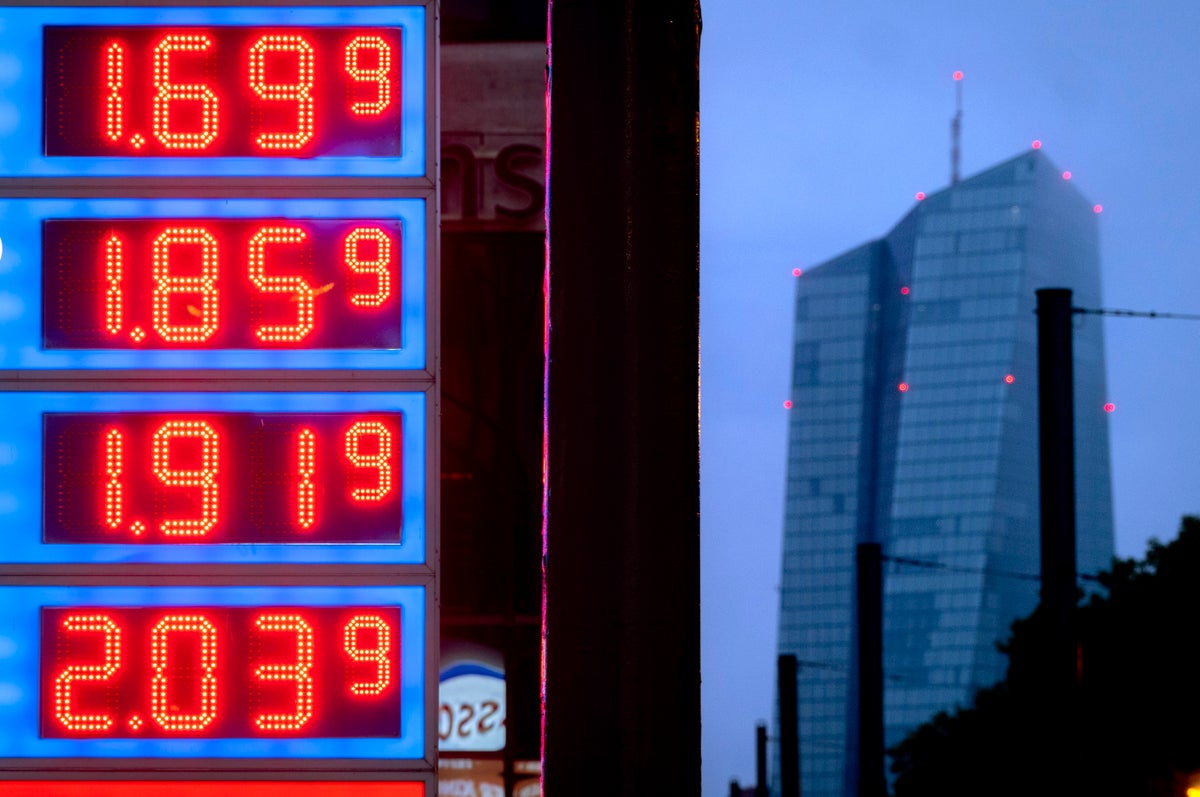
The inflation that has been wearing on European consumers fell sharply to 2.9% in October, its lowest in more than two years as fuel prices fell and rapid interest rate hikes from the European Central Bank took hold.
But that encouraging news was balanced by official figures showing economic output in the 20 countries that use the euro shrank by 0.1% in the July-September quarter.
Inflation fell from an annual 4.3% in September as fuel prices fell by 11.1% and painful food inflation slowed, to 7.5%.
The drop to under 3% is down from the peak of over 10% in October 2022 and puts the inflation figure at least within shouting distance of the European Central Bank's target of 2% considered best for the economy. It was the lowest reading since July, 2021.
But growth disappeared as output shrank after months of stagnation near zero.
Germany, the largest of the 20 countries that use the euro, saw its economy output fall by 0.1%, while No. 2 economy France only scraped out 0.1% growth, slowing from 0.6% in the previous quarter.
Europe may have been pushed into negative territory by a statistical quirk involving Ireland, according to Rory Fennessy, economist at Oxford Economics. Ireland's drop in GDP of 1.8% was the largest among eurozone economies - but disproportionately reflects the finances of multinational companies that are based there.
Economic momentum remains weak for the months ahead, and will only recover pace when wages catch up with inflation, he wrote in a research note. “The eurozone is set for a period of economic stagnation,” he said.
The lower inflation figure follows a rapid series of interest rate hikes by the European Central Bank. Higher central bank rates are the typical medicine against inflation that’s too high. They influence borrowing costs throughout the economy, raising the cost of credit for purchases such as homes or for expanding factories or offices. That reduces the demand for goods and thus restrains price increases.
But high rates can also slow growth. In recent months they have slammed credit-sensitive sectors like construction of new houses and business facilities. Meanwhile lingering inflation has still been high enough to hold back spending by consumers who had to set more money aside for necessaries like food and utility bills.
The future path of inflation toward the ECB's target remain uncertain because core inflation, excluding volatile fuel and food prices, remains higher than the headline figure, at 4.2%. Meanwhile other indications of future inflation such as company's expectations for selling prices have seen a “huge decline,” said Jack Allen-Reynolds, deputy chief eurozone economist at Capital Economics.
The current burst of inflation was set off as the global economy rebounded from the COVID-19 pandemic, leading to shortages of parts and raw materials. It worsened when Russian invaded Ukraine, sending energy prices soaring as Moscow cut off most natural gas to Europe.
Europe's sluggish economy contrasts with robust growth of 4.9% in the same quarter in the U.S, where the economy was boosted by free-spending consumers and by businesses rebuilding inventories despite a similar rapid series of rate increases by the Federal Reserve.







